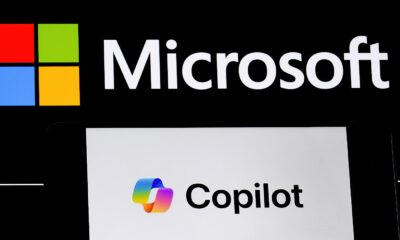MARKETING
Five great tools to improve PPC ads

Every digital marketer wants to reach the top position on the search engine results. However, if you’ve recently launched a new website or your niche is saturated, starting with paid search ads sounds like a good idea.
Strategically created PPC campaigns can drive leads, sales or sign-ups to your websites. You know what? In fact, businesses earn an average of $8 for every dollar they spend on Google Ads.
Optimizing PPC campaigns is not easy, but it’s very powerful if you do it properly. Just like SEO, it is essential to conduct extensive keyword research, optimize ad copy, and design high-converting landing pages.
Fortunately, there are a lot of effective PPC tools that will help you analyze your competitors’ PPC strategies, figure out tricks in their campaigns, and improve your PPC campaigns.
If you are ready to take an evolutionary leap in your PPC advertising, take a look at my list of five amazing tools to save you time, give you crucial insights, and raise money for your business.
Five tools to improve PPC ads
1. WordStream Advisor: Streamline your PPC campaigns at scale
WordStream offers a pretty neat tool that is targeted to small and medium-sized business owners who want to manage their PPC campaigns across advertising platforms properly. The tool can integrate with different PPC channels like Google Ads, Facebook, Bing, and Instagram.
One of the best features is the 20-Minute Work Week, a workflow that includes 9 items to help you improve the overall PPC process. It will analyze everything: get suggestions for ad budget and ad changes, identify valuable and negative keywords, split up ad groups, and create reports around conversion and call data. You can read more about it here.

The true worth of WordStream is the fact that they adapt and integrate all of the changes and upgrades when it comes to Google and its algorithm updates. So, you don’t need to constantly check them.
Cost: Free trial for 7 days, paid plans start at $299/month for 3-month plans.
2. SE Ranking: Comprehensive keyword and competitor analysis
SE Ranking PPC research tool focuses on keyword research, competitor analysis, and advertising campaign planning. When researching competitors on SE Ranking, you can enter your domain to find a list of websites that compete with you in paid search.
You can also find which keywords they are using, which ads drive the most traffic, how they rank in search engines, and how their ads look like in paid search. The tool shows competitor’s data like search volume, CPC, KEI, traffic cost, and a number of clicks.
Going to the “Adverts history” section, you can get visual graphs of the previous stats by time period, which displays position, monthly budget, and keywords. Having this information allows you to see all competitors’ keywords they have bid on in the past and figure out whether you should take a similar bidding strategy.

You can easily export all the necessary information into an Excel file that you can share with your team. You can check it out in action here.
Cost: Paid plans start around $39 per month. SE Ranking provides a 14-day free trial and demo account.
3. Finteza: Conduct an impactful PPC analysis
Finteza is an advanced advertising analytics tool that shows you the exact percentage of high-quality and low-quality traffic coming to your website. The tool includes collection, processing, and instant data mapping through real-time charts and reports to give the most important information whenever you need it.
Finteza provides plenty of options to create, configure and target marketing campaigns for any website and instantly pull out detailed reports and statistics on clicks, impressions, and conversions of your ads.

You can also set up different conversion goals, and even use the retargeting option to display your optimized ads to the users who have performed a certain action on your website. The tool offers integrations with multiple CMS systems.
One of its biggest advantages is to track end-to-end user interaction. It means that the software provides data of all advertising platforms from which you purchase traffic and enables you to adapt them to individual conversions.
You can get the full list of Finteza’s features here.
Cost: The software offers a 30-day trial, and pricing starts at $4/month.
4. Unbounce: Build dedicated landing pages
Effective landing pages are crucial for the overall PPC process. At the very least, your ad will get them there, but conversions happen on landing pages. Creating a solid one with tools like Unbounce intended to simplify the whole process.
The tool includes a wide range of awesome features like A/B testing, dynamic text replacement, AMP landing pages, and real-time data dashboard. You can quickly change the text on your custom landing page to match what users are searching for, and split test them without touching a single line of code.

Unbounce offers over 100 high-converting templates for every type of landing page you need (sales pages, ebooks, events, products, webinar, etc.). It works with tons of in-app integrations and thousands more through Zapier.
Cost: Pricing starts at $79 per month, but you can try out a 14-day free trial.
5. Bannersnack: Display ad image creation and inspiration
The main purpose of advertising is to make people curious about your products. If you design banner ads that have interactive content, people are far more likely to click on them. One of the best solutions to do that is Bannersnack.
The tool is designed for advertising specialists to save their time and efforts on designing banners of different sizes. You can create both animated and static banners from scratch or select one of its high-quality templates created by professional designers and optimized by marketers.

One of its most convenient features is the ability to create the entire banner set on one toolbar within minutes. The banner maker is compatible with all major ad networks, Facebook Ads, Google Ads, and social networks. One of the recent features is the option to create AMPHTML ads.
Cost: Freemium; paid plans start from $7 per month.
Wrap up
Using the right PPC tools, you can find out your competitors’ best performing keywords, ad copy information, and much more. They help you save a lot of time and efforts as you know what marketing strategies your competitors are using to get maximum results and reach.
What PPC tools do you use and love? Share your views in the comments below.
















